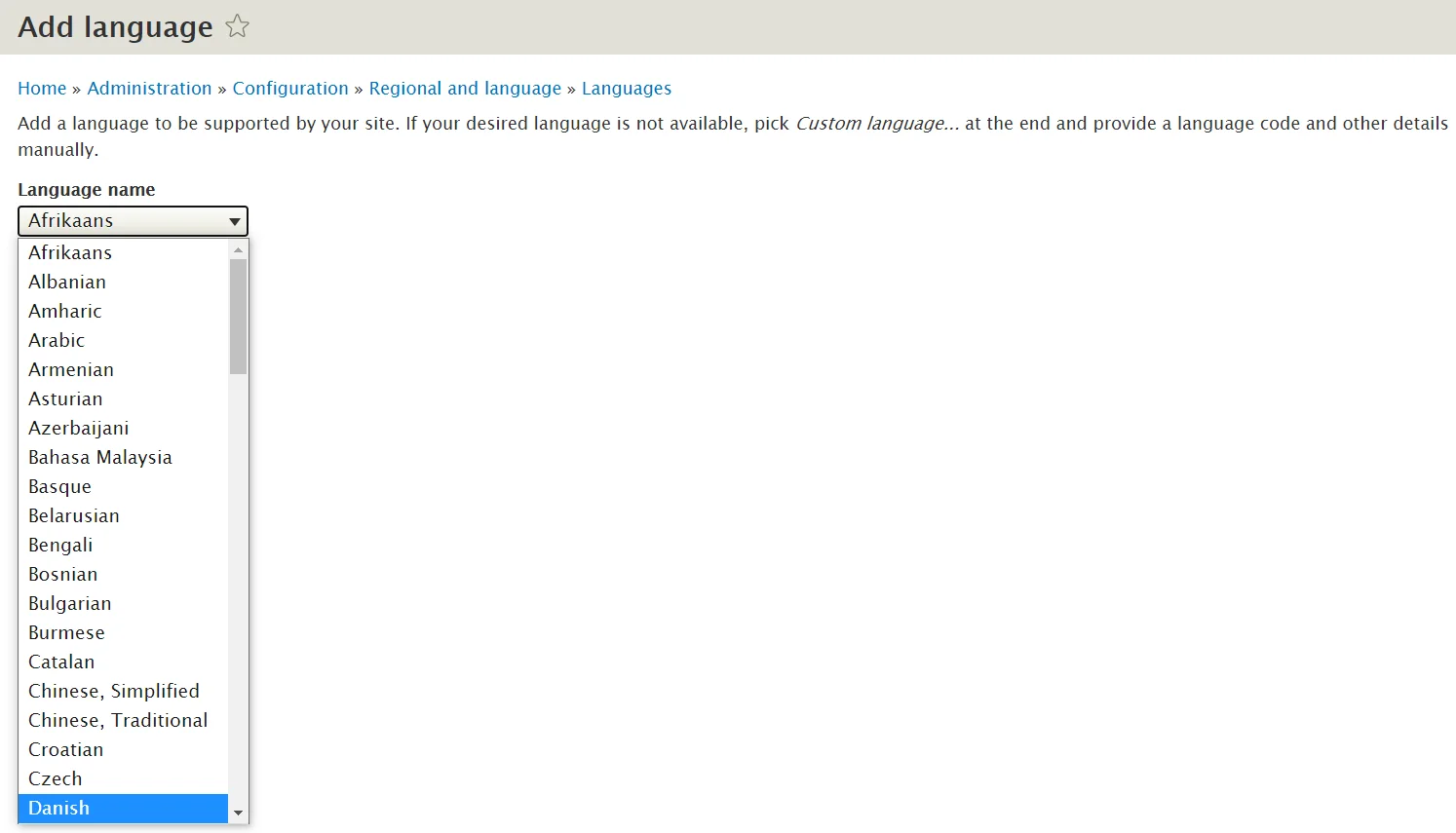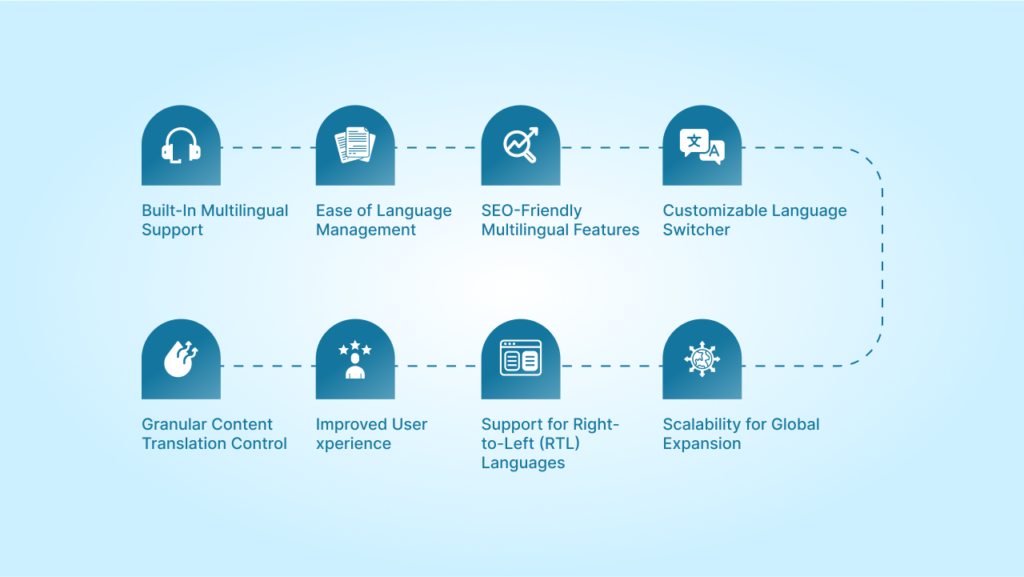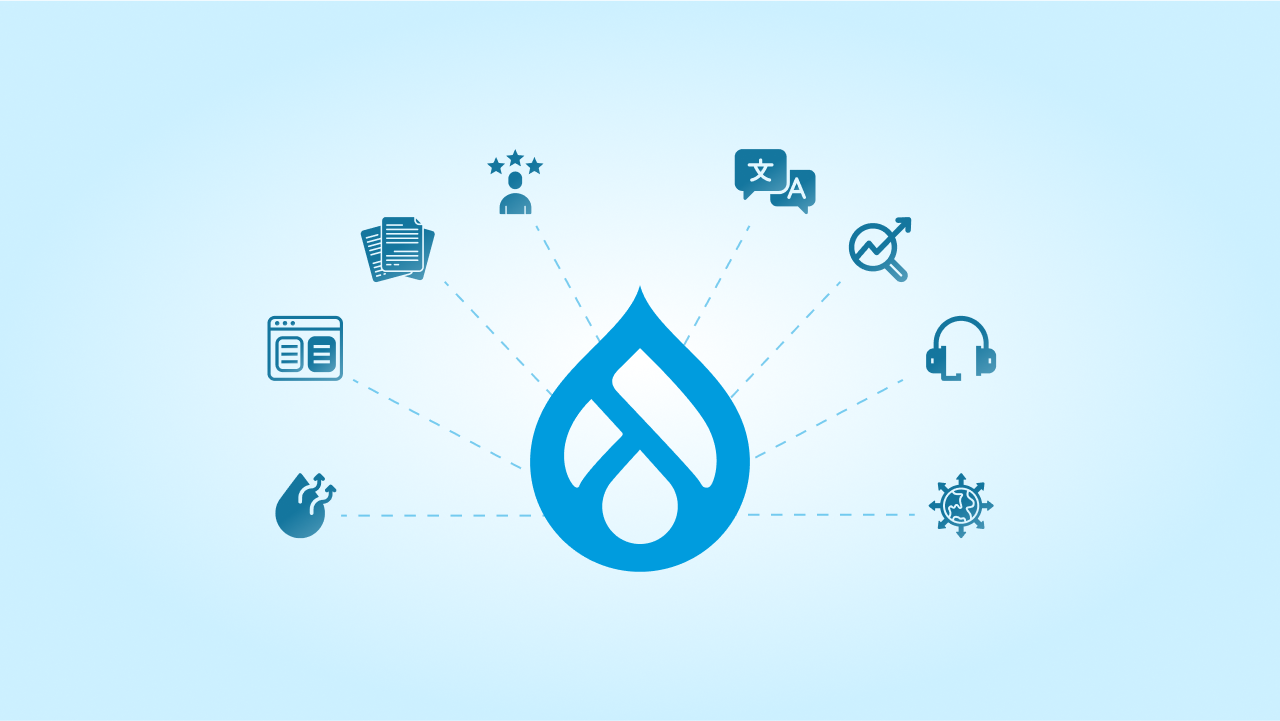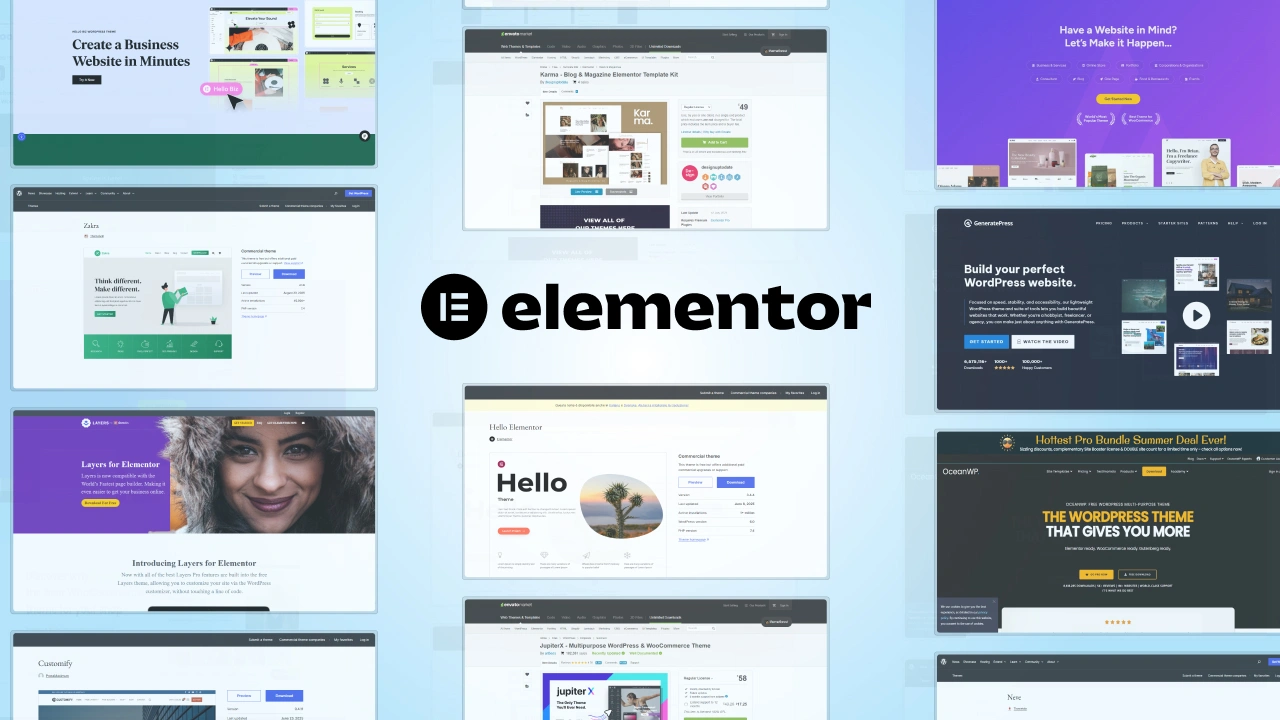Have you ever landed on a website and struggled to understand anything because it’s in a different language?
Well, at some point, we all have been there.
Now imagine how much better it would be if visitors from all over the world could easily switch to their preferred language on your site. That’s exactly what Drupal’s multilingual features help you achieve.
Drupal is a highly flexible CMS platform that makes building multilingual websites simple., and with proper Drupal development expertise, you can ensure that your website is set up for success with these powerful tools.
The best part? Well, you don’t need extra plugins—everything you need is already built into the platform. This means less hassle for you and a smoother experience for your users.
In fact, multilingual websites can reach 75% more internet users who don’t speak English as their primary language. So considering today’s global market, offering content in multiple languages isn’t just a nice-to-have; it’s essential. People feel more connected when they can read in their native language, and that connection builds trust.
With Drupal’s multilingual tools, you can easily expand your website’s reach and speak to audiences across different regions, all without complicating your workflow.
What Does Drupal Multilingual Exactly Do?
In simple terms, Drupal Multilingual allows your website to display content in multiple languages. It makes it easy to translate not only the content, but also the user interface, menus, forms, and even URLs. This ensures that visitors can browse and interact with your site in their preferred language.

Whether you’re translating a few pages or your entire site, Drupal gives you full control over how and where languages are used. It’s built into Drupal’s core, so you don’t need extra plugins or complex setups to manage a multilingual website.
Start building a multilingual site with Drupal today and connect with audiences in their native languages.
8 Benefits of Using Drupal Multilingual for Your Website

1. Built-In Multilingual Support
Drupal comes with multilingual features built right into its core, so you don’t need any external plugins. It includes key modules like Content Translation, Language, and Interface Translation. These modules work together to handle everything from translating page content to translating the site’s user interface, menus, and even system messages.
This integration means that managing a multilingual website is seamless and efficient. You can easily add new languages, translate content, and customize how each language is displayed—all from within Drupal’s core functionality.
2. Ease of Language Management
Adding a new language to your site is as easy as a few clicks. Once set up, you can choose which parts of your site—such as pages, blocks, or menus—should be available in different languages. This flexibility lets you configure specific languages for different types of content, ensuring that your users see the right language at the right time.
With clear settings and intuitive controls, managing a multilingual site in Drupal is straightforward, even if you’re handling complex content.
3. SEO-Friendly Multilingual Features
Language-specific SEO is extremely important for reaching international audiences, and multilingual sites offer several built-in tools to help. Features like hreflang tags ensure search engines display the correct language version of your content to users in different regions.
Additionally, localized URLs allow for more targeted search engine indexing, boosting your site’s visibility in various languages and locations. By optimizing your multilingual content for search engines, you improve your chances of ranking higher and reaching the right audience in their native language.
4. Customizable Language Switcher
A flexible language switcher is essential for a seamless multilingual experience. You can customize how users switch between languages on your site, whether through a dropdown menu, flags, or other design options.
Additionally, there are options for automatic language detection based on a user’s browser settings or IP location, or you can allow users to manually choose their preferred language. This flexibility ensures that your visitors can easily navigate your site in the language that suits them best.
5. Granular Content Translation Control
With multilingual capabilities, you have complete control over what content gets translated and what stays in the original language. This flexibility allows you to choose whether to translate specific pages, menus, or even individual blocks, depending on your needs.
You can manage translations separately for different content types, giving you fine-tuned control over how your site’s multilingual content is displayed. This ensures a consistent user experience across languages while giving you the ability to focus your translations where they’re most needed.
6. Improved User Experience
Providing content in a user’s native language significantly enhances their experience on your site. By offering language-specific content and user interfaces, you make your website more accessible, which leads to better engagement and user satisfaction.
The platform allows for easy translation of not just content, but also user interfaces, forms, and system messages, ensuring a smooth and consistent experience for visitors, no matter what language they speak. This personal touch can greatly improve how users interact with your site, fostering trust and encouraging return visits.
7. Support for Right-to-Left (RTL) Languages
Supporting languages like Arabic or Hebrew, which are read from right to left, are simple and hassle-free. The platform offers in-built support for RTL languages, meaning there’s no need for complicated setups or extra configurations.
Everything, from text alignment to interface layout, automatically adjusts to suit these languages, providing a seamless experience for both administrators and users. This ensures that your website can cater to a global audience, including those who use RTL languages, without any extra effort.
8. Scalability for Global Expansion
As your business grows, so can your multilingual website. The platform is built to handle large-scale sites with ease, making it an ideal choice for businesses expanding into new markets. You can add and manage as many languages as needed without compromising performance or user experience.
Whether you’re supporting two languages or twenty, the system is designed to scale with your global ambitions, ensuring smooth operation as your multilingual needs evolve.
Real-World Examples of Drupal Multilingual Websites
Many well-known global brands leverage Drupal’s powerful multilingual capabilities to enhance their digital presence across different languages and regions. Here are a few examples that highlight the effectiveness of Drupal’s multilingual functionality:
1. Tesla
Tesla, the leading electric vehicle manufacturer, uses Drupal’s multilingual features to cater to its diverse global audience. With customers in various countries, Tesla’s website seamlessly delivers content in multiple languages, ensuring a tailored user experience based on location. This helps Tesla communicate with potential buyers in their native language, strengthening brand engagement and accessibility across international markets. Tesla’s use of Drupal helps streamline content management for its various regions, making it easier for teams to update and manage localized content efficiently.
2. Jack Daniel’s
The famous whiskey brand Jack Daniel’s uses Drupal to create a consistent and culturally relevant web experience for users in different parts of the world. On its multilingual website, Jack Daniel’s tailors content not only for different languages but also for regional regulations and preferences. For example, its Indian website (available in English but adjusted for the local market) uses localization features to offer content specific to that region’s needs, including legal drinking age restrictions. Drupal’s translation workflows enable Jack Daniel’s to easily manage content in various markets, keeping the brand’s voice and message consistent worldwide.
3. Omron Electronic Components
Omron, a leader in electronic components and automation solutions, employs Drupal’s multilingual framework to provide content across multiple languages and regions. Their global website is designed to cater to customers in different countries, making it easier for users to navigate product information, specifications, and services in their native language. By leveraging Drupal’s localization and translation features, Omron ensures that technical content is not only accurately translated but also regionally adapted to meet the needs of their diverse customer base. This seamless language management enhances user experience and helps Omron maintain a consistent global brand identity.
Conclusion
Having a multilingual website isn’t just a nice feature—it’s super essential for businesses looking to connect with a global audience. The thing with Drupal is that it makes it easy to manage a site in multiple languages, providing all the tools you need right out of the box. From translating content and improving your SEO to giving users a seamless language-switching experience, Drupal takes care of the heavy lifting.
If you are thinking about expanding your reach or making your site more accessible, Drupal CMS development offers a robust solution with its multilingual features. It simplifies the process, letting you focus on what matters most—engaging with your audience in the languages they’re most comfortable with. So if you are ready to take your website global, Drupal multilingual is a smart, hassle-free way to get there.
Discover how Drupal’s multilingual features can help you grow your business internationally.





